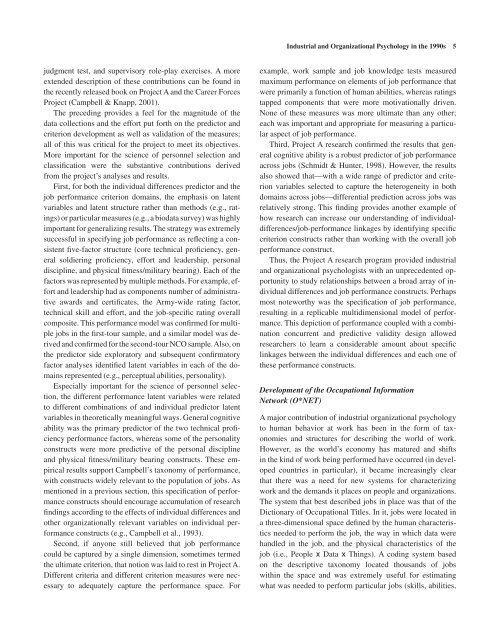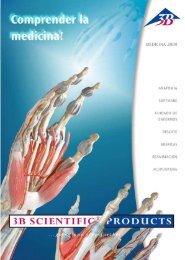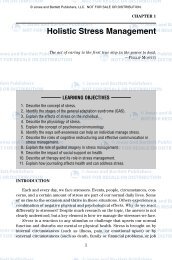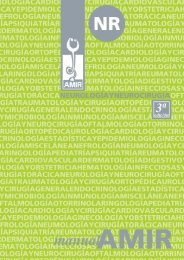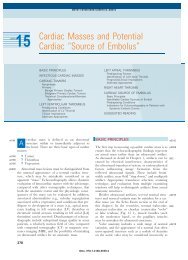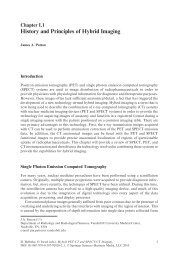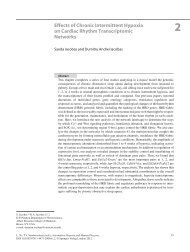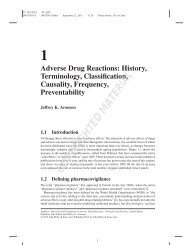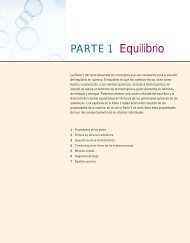Stability and Change in Industrial and Organizational ... - Axon
Stability and Change in Industrial and Organizational ... - Axon
Stability and Change in Industrial and Organizational ... - Axon
You also want an ePaper? Increase the reach of your titles
YUMPU automatically turns print PDFs into web optimized ePapers that Google loves.
orm_ch01.qxd 9/26/02 2:59 PM Page 5<br />
judgment test, <strong>and</strong> supervisory role-play exercises. A more<br />
extended description of these contributions can be found <strong>in</strong><br />
the recently released book on Project A <strong>and</strong> the Career Forces<br />
Project (Campbell & Knapp, 2001).<br />
The preced<strong>in</strong>g provides a feel for the magnitude of the<br />
data collections <strong>and</strong> the effort put forth on the predictor <strong>and</strong><br />
criterion development as well as validation of the measures;<br />
all of this was critical for the project to meet its objectives.<br />
More important for the science of personnel selection <strong>and</strong><br />
classification were the substantive contributions derived<br />
from the project’s analyses <strong>and</strong> results.<br />
First, for both the <strong>in</strong>dividual differences predictor <strong>and</strong> the<br />
job performance criterion doma<strong>in</strong>s, the emphasis on latent<br />
variables <strong>and</strong> latent structure rather than methods (e.g., rat<strong>in</strong>gs)<br />
or particular measures (e.g., a biodata survey) was highly<br />
important for generaliz<strong>in</strong>g results. The strategy was extremely<br />
successful <strong>in</strong> specify<strong>in</strong>g job performance as reflect<strong>in</strong>g a consistent<br />
five-factor structure (core technical proficiency, general<br />
soldier<strong>in</strong>g proficiency, effort <strong>and</strong> leadership, personal<br />
discipl<strong>in</strong>e, <strong>and</strong> physical fitness/military bear<strong>in</strong>g). Each of the<br />
factors was represented by multiple methods. For example, effort<br />
<strong>and</strong> leadership had as components number of adm<strong>in</strong>istrative<br />
awards <strong>and</strong> certificates, the Army-wide rat<strong>in</strong>g factor,<br />
technical skill <strong>and</strong> effort, <strong>and</strong> the job-specific rat<strong>in</strong>g overall<br />
composite. This performance model was confirmed for multiple<br />
jobs <strong>in</strong> the first-tour sample, <strong>and</strong> a similar model was derived<br />
<strong>and</strong> confirmed for the second-tour NCO sample.Also, on<br />
the predictor side exploratory <strong>and</strong> subsequent confirmatory<br />
factor analyses identified latent variables <strong>in</strong> each of the doma<strong>in</strong>s<br />
represented (e.g., perceptual abilities, personality).<br />
Especially important for the science of personnel selection,<br />
the different performance latent variables were related<br />
to different comb<strong>in</strong>ations of <strong>and</strong> <strong>in</strong>dividual predictor latent<br />
variables <strong>in</strong> theoretically mean<strong>in</strong>gful ways. General cognitive<br />
ability was the primary predictor of the two technical proficiency<br />
performance factors, whereas some of the personality<br />
constructs were more predictive of the personal discipl<strong>in</strong>e<br />
<strong>and</strong> physical fitness/military bear<strong>in</strong>g constructs. These empirical<br />
results support Campbell’s taxonomy of performance,<br />
with constructs widely relevant to the population of jobs. As<br />
mentioned <strong>in</strong> a previous section, this specification of performance<br />
constructs should encourage accumulation of research<br />
f<strong>in</strong>d<strong>in</strong>gs accord<strong>in</strong>g to the effects of <strong>in</strong>dividual differences <strong>and</strong><br />
other organizationally relevant variables on <strong>in</strong>dividual performance<br />
constructs (e.g., Campbell et al., 1993).<br />
Second, if anyone still believed that job performance<br />
could be captured by a s<strong>in</strong>gle dimension, sometimes termed<br />
the ultimate criterion, that notion was laid to rest <strong>in</strong> Project A.<br />
Different criteria <strong>and</strong> different criterion measures were necessary<br />
to adequately capture the performance space. For<br />
<strong>Industrial</strong> <strong>and</strong> <strong>Organizational</strong> Psychology <strong>in</strong> the 1990s 5<br />
example, work sample <strong>and</strong> job knowledge tests measured<br />
maximum performance on elements of job performance that<br />
were primarily a function of human abilities, whereas rat<strong>in</strong>gs<br />
tapped components that were more motivationally driven.<br />
None of these measures was more ultimate than any other;<br />
each was important <strong>and</strong> appropriate for measur<strong>in</strong>g a particular<br />
aspect of job performance.<br />
Third, Project A research confirmed the results that general<br />
cognitive ability is a robust predictor of job performance<br />
across jobs (Schmidt & Hunter, 1998). However, the results<br />
also showed that—with a wide range of predictor <strong>and</strong> criterion<br />
variables selected to capture the heterogeneity <strong>in</strong> both<br />
doma<strong>in</strong>s across jobs—differential prediction across jobs was<br />
relatively strong. This f<strong>in</strong>d<strong>in</strong>g provides another example of<br />
how research can <strong>in</strong>crease our underst<strong>and</strong><strong>in</strong>g of <strong>in</strong>dividualdifferences/job-performance<br />
l<strong>in</strong>kages by identify<strong>in</strong>g specific<br />
criterion constructs rather than work<strong>in</strong>g with the overall job<br />
performance construct.<br />
Thus, the Project A research program provided <strong>in</strong>dustrial<br />
<strong>and</strong> organizational psychologists with an unprecedented opportunity<br />
to study relationships between a broad array of <strong>in</strong>dividual<br />
differences <strong>and</strong> job performance constructs. Perhaps<br />
most noteworthy was the specification of job performance,<br />
result<strong>in</strong>g <strong>in</strong> a replicable multidimensional model of performance.<br />
This depiction of performance coupled with a comb<strong>in</strong>ation<br />
concurrent <strong>and</strong> predictive validity design allowed<br />
researchers to learn a considerable amount about specific<br />
l<strong>in</strong>kages between the <strong>in</strong>dividual differences <strong>and</strong> each one of<br />
these performance constructs.<br />
Development of the Occupational Information<br />
Network (O*NET)<br />
A major contribution of <strong>in</strong>dustrial organizational psychology<br />
to human behavior at work has been <strong>in</strong> the form of taxonomies<br />
<strong>and</strong> structures for describ<strong>in</strong>g the world of work.<br />
However, as the world’s economy has matured <strong>and</strong> shifts<br />
<strong>in</strong> the k<strong>in</strong>d of work be<strong>in</strong>g performed have occurred (<strong>in</strong> developed<br />
countries <strong>in</strong> particular), it became <strong>in</strong>creas<strong>in</strong>gly clear<br />
that there was a need for new systems for characteriz<strong>in</strong>g<br />
work <strong>and</strong> the dem<strong>and</strong>s it places on people <strong>and</strong> organizations.<br />
The system that best described jobs <strong>in</strong> place was that of the<br />
Dictionary of Occupational Titles. In it, jobs were located <strong>in</strong><br />
a three-dimensional space def<strong>in</strong>ed by the human characteristics<br />
needed to perform the job, the way <strong>in</strong> which data were<br />
h<strong>and</strong>led <strong>in</strong> the job, <strong>and</strong> the physical characteristics of the<br />
job (i.e., People x Data x Th<strong>in</strong>gs). A cod<strong>in</strong>g system based<br />
on the descriptive taxonomy located thous<strong>and</strong>s of jobs<br />
with<strong>in</strong> the space <strong>and</strong> was extremely useful for estimat<strong>in</strong>g<br />
what was needed to perform particular jobs (skills, abilities,


